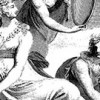
Siobhan Carroll, “On Erasmus Darwin’s The Botanic Garden, 1791-1792″
1792 witnessed the publication of the complete version of Erasmus Darwin’s The Botanic Garden, a lengthy nature poem that surveyed the state of science in its day. The Botanic Garden proved immensely popular on its publication but later fell out of favor as the Anti-Jacobin took aim at its liberal politics. This paper focuses on one of the most notorious sections of the poem, in which Darwin describes his plan to change the world’s climate via iceberg destruction. The argument traces the reception of Darwin’s climate imagery from its initial reception through its redeployment in the poetry of Percy Bysshe Shelley. Although The Botanic Garden and its plan for climate intervention might be framed in terms of what philosophers call the “negative event”—an event that fails to happen—Darwin was essentially correct in his assertion that the technologies of the industrial revolution could be used to change the climate of the globe.
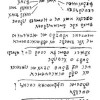
Dennis Denisoff, “The Hermetic Order of the Golden Dawn, 1888-1901”
This article presents the history of the Hermetic Order of the Golden Dawn (1888-1901), the most influential hermetic society of the nineteenth century. Its members practiced and trained initiates in using natural magic to enrich one’s connection with a spiritual realm of being. Although secretive, the Golden Dawn was, nevertheless, both the product of, and an influential contributor to, a broader social investment in the occult. In addition to offering a brief history of the Order and a synopsis of its structure, this article situates the Order among other related associations of the period, as well as within a literary and dramatic community, considering its writings and ritual practices as creative products. This article encourages a view of the Order not as isolated and inward-looking, but as engaged in a lively exploration of contemporary interests and values, and as making an original contribution to the literature of the late-Victorian period in the process.
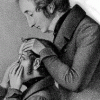
Mary Wilson Carpenter, “A Cultural History of Ophthalmology in Nineteenth-Century Britain”
The date and the nature of Patrick Brontë’s cataract surgery illustrate both progress and its lack in the science and practice of British ophthalmology. The “newest” form of such surgery, cataract extraction (developed more than a century before) and the oldest, couching (more than 2,000 years old), were both being performed by British surgeons around the mid-point of the Victorian era. Ophthalmology was one of the first specializations to become a respectable profession in British medicine, but its greatest successes—such as the cure of blindness caused by cataracts—were achieved by those willing to adopt innovative surgical techniques and new medical treatments largely developed elsewhere.

Peter Capuano, “On Sir Charles Bell’s The Hand, 1833″
This essay explores the cultural context in which Sir Charles Bell’s 1833 Bridgewater Treatise was published by focusing on the work as a culmination of his deep religious faith, his Edinburgh anatomical training, and his occupation as a surgeon at the Leeds Infirmary. It argues that The Hand was not merely an extension of Paleyan natural theology but also an important response to the era’s struggle with the grim physical reality of the supersession of manual labor by automatic manufacture.
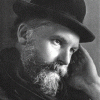
Jill Galvan, “Tennyson’s Ghosts: The Psychical Research Case of the Cross-Correspondences, 1901-c.1936”
The cross-correspondences are a well-known episode in the history of psychical research, a field that arose in the late Victorian period and was devoted to the scientific investigation of paranormal phenomena. Extending over three decades, this case was a study of possible communication from the other world. Psychical researchers collected and compared thousands of automatic writings (texts supposedly channeled unconsciously and authored by the spirits) that, while generated by several mediums, all seemed to cohere, as if spiritually orchestrated, in their tightly corresponding allusions to classical and literary lore. This essay chronicles the origins of and people involved with the cross-correspondences, together with their two most significant alleged spirit communications, the “Palm Sunday” and “Plan” messages. It then goes on to examine the patterns of allusion in the automatic writing, in order to claim the key role of Victorian poetry as constructive material: the messages, as deduced by psychical researchers, appear to be built on the stories and characters of writers like Alfred Tennyson. It was arguably this appeal to familiar literary elements of the previous century that seemed to bring the ghosts in the case to life; thus a literary analysis of the cross-correspondences can help us to understand their power to move their investigators to belief. On this reading, the cross-correspondences, though contemporaneous with the rise of modernism and with events like the Great War, are clearly a part of the “long nineteenth century.” As such they usefully emphasize the fluidity of history itself, frustrating conventional distinctions between the Victorian and the modern.
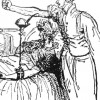
Matthew Rowlinson, “On the First Medical Blood Transfusion Between Human Subjects, 1818”
The first experiments in blood transfusion took place in the seventeenth century, using blood drawn from animals. After the death of a French patient and the trial of his physician for manslaughter, transfusion was abandoned for a century and a half. When it resumed in the nineteenth century, the first trials used human blood. They were conducted by the obstetrician James Blundell, who developed transfusion to treat women suffering from hemorrhage after childbirth. During the course of the century, transfusion was applied as a remedy to different kinds of sicknesses and injuries, and performed at different times with various fluids. By the 1880s, British doctors had abandoned transfusion with blood in favor of infusion with saline solution; the practice was only again resumed after the recognition of human blood types in the twentieth century. Developments in the practice of transfusion and infusion during the century reflect shifting views of how gender and species identity are embodied, and of relations of affinity and immunity between bodies of different kinds. They also reflect a shift from a vitalist to a mechanist understanding of blood and its function.
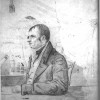
Peter W. Sinnema, “10 April 1818: John Cleves Symmes’s ‘No. 1 Circular'”
This essay revisits the infamous publication of American trader and soldier John Cleves Symmes’s “No. 1 Circular” from St. Louis Missouri in 1818, tracing the roots of Symmes’s thought to late seventeenth-century England. Symmes’s declaration of belief in an accessible and habitable hollow earth had its ideological origins in a 1691 hypothesis proposed to the Royal Society of London by the great English astronomer, Edmond Halley, whose attempt to solve the riddle of magnetic variation led him to argue for the existence of “a much more ample Creation” beneath our feet. Halley’s hollow-earth idea—which also served as the point of genesis for a vital literary subgenre, the hollow-earth romance—was eulogized in Cotton Mather’s Christian Philosopher (1721), which transferred to an American audience important insights from early-Enlightenment natural philosophy and paved the way for Symmes’s flamboyant claims about a new, subterranean world.
